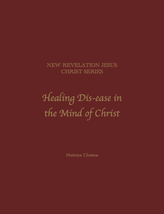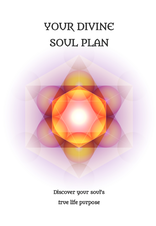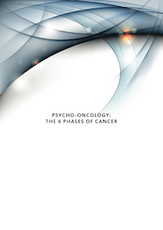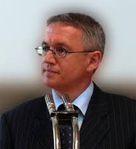Psycho-Oncology: Discover How Stress Causes Cancer
Phase 1 of Cancer: Inescapable Shock
Phase 2 of Cancer: Adrenaline Depletion
Phase 3 of Cancer: The Cancer Fungus
Phase 4 of Cancer: Niacin Deficiency
Phase 5 of Cancer: Vitamin C Depletion
Phase 6 of Cancer: Immune Suppression
HIGH DOSE VITAMIN C CANCER TREATMENT
High dose vitamin C can be take orally or intravenously in the treatment of cancer to stop cancer cell growth. Vitamin C also enhances the immune system by increased lymphocyte production, walls off tumours by stimulating collagen formation, prevents metastasis, expedites wound healing after cancer surgery, neutralizes carcinogenic substances and prevents cellular free radical damage. High dose oral or intravenous vitamin C therapy also has an ameliorating effect on the side effects of the highly oxidative chemotherapeutic agents. Some of the side effects of chemotherapy are so severe that many patients stop therapy as a result. It has been shown to increase the lifespan of some cancer patients when receiving 10-100 grams 2-7 times per week, notably when chemotherapy has not already been used. High dose vitamin C iv or oral treatment inhibits hyaluronidase, an enzyme tumours use to metastasize and invade other organs throughout the body. It induces apoptosis to help program cancer cells into dying early and it corrects the almost universal scurvy in cancer patients. Cancer patients are normally tired, listless, bruise easily, and have a poor appetite. They don't sleep well and have a low threshold for pain. This adds up to a very classic picture of scurvy that generally goes unrecognized by their conventional physicians. When cancer patients receive high doses of oral or intravenous vitamin C they report pain level goes down and are better able to tolerate chemotherapy. They bounce back quicker since the high doses of vitamin C reduces the toxicity of the chemotherapy and radiation without compromising their cancer cell killing effects. High dose oral or intravenous vitamin c cancer treatment can help patients withstand the effects of their traditional therapies, heal faster, be more resilient to infection, develop a better appetite, and remain more active overall. These things promote a better response to overall cancer therapy.
IMPORTANT NOTE: If you decide to stop taking large doses of vitamin C, it is important to wean off the dose slowly. This is because the body will continue to use high doses of vitamin C at the level it is used to, and this can leave the already weakened cancer patient in an even further weakened state, by depleting the body of important vitamin C reserves. [Note: The Holy Spirit of God speaks of this in-depth under the role of lemons as a life extender]
IMPORTANT NOTE: If you decide to stop taking large doses of vitamin C, it is important to wean off the dose slowly. This is because the body will continue to use high doses of vitamin C at the level it is used to, and this can leave the already weakened cancer patient in an even further weakened state, by depleting the body of important vitamin C reserves. [Note: The Holy Spirit of God speaks of this in-depth under the role of lemons as a life extender]
VITAMIN C IN THE TREATMENT OF CANCER: A SUMMARY
Vitamin C in the Treatment of Cancer, by Kathleen A Head, ND. "The Vale of Leven Studies: Most of the studies on vitamin C and cancer relate to its protective effect, rather than use of the vitamin for the treatment of active cancer. The Vale of Leven studies conducted by Ewan Cameron, MD and his associates, (later including Linus Pauling, PhD), at his hospital in Loch Lomondside, Scotland, are among the few exceptions. In preliminary studies which began in November 1971, a small group of patients with advanced cancer were given 10 grams of sodium ascorbate daily. The initial testing was an uncontrolled study, conducted on 50 patients. Seventeen of these patients exhibited seemingly no response, 10 a minimal response, 11 retardation of the tumour growth, 3 ceasing of the tumour growth, 5 regression of tumour growth with long-term survival, and 6 experienced haemorrhage and necrosis of the tumours, which destroyed the tumours but killed the patients in the process. An evaluation of the life expectancy of these first 50 "terminally ill" patients treated with ascorbate yielded promising results.
Based on data from previous similar groups of patients, it was expected that 90 percent of the group would be dead within three months of being labelled "terminal." When 10 g ascorbate was prescribed daily (beginning at the time the patient was labelled "terminal"), by the 100th day of treatment the mortality rate was only 50 percent. Of the remaining 25 patients, 20 died between days 110 and 659, with an average survival time of 261 days; and five had an average survival time of greater than 610 days. Subsequently, a controlled retrospective study was conducted, comparing survival times of 100 terminally ill cancer patients at Vale of Leven Hospital with 1,000 matched controls from the same hospital. The patients were randomly selected from the database of those terminal cancer patients who had received ascorbate. Each ascorbate-treated patient was matched with 10 controls from the same hospital of the same age, sex, and type and stage of cancer who had not been prescribed vitamin C. In 90 percent of the cases, the ascorbate-treated group lived three times longer than the control group. For the other 10 percent, long-term survival made it impossible to assess survival time with certainty, but at the time of publication of the study, the ascorbate group exhibited greater than 20 times the survival rate of the control group. Having been criticized by some investigators for not assuring the subjects were randomly chosen from the same representative subpopulations in the treated and control groups, a second retrospective evaluation at the Vale of Leven hospital was undertaken in 1978 again with 100 patients receiving ascorbic acid compared to 1,000 matched controls without vitamin C. Most of the ascorbate-treated group and about half the controls were the same subjects as in the initial study. This time, since there are different mean survival times for different types of cancer, the groups were further divided according to types of cancer, and controls carefully matched. In addition, the groups passed several "randomness" tests. In each of the nine types of cancer the ascorbate group had a considerably longer survival time than their matched controls. At the time of evaluation, eight patients in the vitamin C group were still living, while no one was alive in the control group; this resulted in 321+ days longer lifespan for the vitamin C treated group. Factoring out those in the ascorbate group who were still living at the time of evaluation, the vitamin C group lived an average of 251 days longer than the control group.
Cameron and Pauling later evaluated the first 500 "terminal" cancer patients to receive ascorbate. In most cases, subjective improvement increased feeling of well-being, more energy, more alertness, decrease or elimination of pain, better appetite were noted by the ascorbate patients. Cameron reported a quite dramatic relief of bone pain from metastases in four out of five patients. Objective improvements included a decrease in malignant ascites and pleural effusion, relief from hematuria, some reversal of hepatomegaly and jaundice, and decreases in erythrocyte SED rate and serum seromucoid levels, all accepted indicators of a decrease in malignant activity. Furthermore, patients who had been on large doses of narcotics, such as morphine, for pain relief, showed none of the typical withdrawal symptoms. Based on the above cited studies the researchers concluded: "It is our conclusion that this simple and safe treatment, the ingestion of large amounts of vitamin C, is of definite value in the treatment of patients with advanced cancer. Although the evidence is as yet not so strong, we believe that vitamin C has even greater value for the treatment of cancer patients with the disease in earlier stages and also for the prevention of cancer."
The Vale of Leven protocol called for a ten-day course via intravenous (IV), continuous slow-drip infusion of sodium ascorbate in half-strength Ringer's Lactate Solution. After the IV treatment, assuming the patient was able to take medication by mouth, an oral dose of vitamin C was begun at a dose of 2.5 grams every 6 hours for a total of 10 grams in 24 hours. The dosage varied somewhat, ranging from 10-30 grams daily, and was continued indefinitely. The goal was to maintain plasma ascorbate levels of at least 3 mg/dl. The researchers reported generally a subjective improvement in well-being, vigour, pain relief, and appetite was apparent within 5-7 days. Increased energy was believed to be a result of improved carnitine synthesis with a resulting increase in triglyceride transport into cell mitochondria.
Japanese Studies: Uncontrolled trials conducted at two different hospitals in Japan during the 1970s also confirmed the increase in survival time of terminal cancer patients supplemented with ascorbate. At the Fukuoka Torikai Hospital, the average survival time after being labelled "terminal" was 43 days for 44 patients supplemented with low levels of ascorbate (less than 4 grams daily), and 246 days for 55 patients supplemented with higher dosages of ascorbate (greater than 5 grams daily - averaging 29 grams daily) and starting at the time of "terminal" diagnosis. The researchers found no differences in survival times between the groups receiving 5-9 grams daily and those receiving 10-29 grams daily. A decline in effect was noted in those receiving 30-60 grams daily. They found the best results with uterine cancer, and the smallest increases in survival time with lung and stomach cancer. Effectiveness of ascorbate was also observed at the Kamioka Kozan Hospital where 19 terminally-ill control patients survived an average of 48 days compared to six patients on high levels of vitamin C who lived an average of 115 days, or 2.4 times longer than the control group. These researchers also reported the improved quality of life observed in the Scottish studies.
Mayo Clinic Studies: In an attempt to either duplicate or refute the Cameron and Pauling results, the Mayo Clinic initiated a test on 150 patients. Subjects were randomly divided into two groups, one group of 60 received 10 grams of ascorbic acid daily in four divided doses while the control group of 63 received an equal number of placebo capsules. After randomization, 27 patients elected not to participate and comprised a third "no treatment" group. Treatment was continued until death or until the patient was no longer able to take medication orally. The two groups were evenly balanced with regard to age, sex, tumour site, initial performance status, and previous treatment. Fifty-eight percent of those receiving placebo and 63 percent of those receiving ascorbate reported subjective improvement in symptoms during the treatment period. The researchers reported no significant difference between the vitamin C and placebo groups in regard to survival time; however, the 27 patients who received no treatment experienced a significantly lower survival time, living an average of 25 days compared to an average of 51 days for the vitamin C or placebo groups. All but nine of the 123 subjects had received prior chemotherapy, radiation, or both."
Based on data from previous similar groups of patients, it was expected that 90 percent of the group would be dead within three months of being labelled "terminal." When 10 g ascorbate was prescribed daily (beginning at the time the patient was labelled "terminal"), by the 100th day of treatment the mortality rate was only 50 percent. Of the remaining 25 patients, 20 died between days 110 and 659, with an average survival time of 261 days; and five had an average survival time of greater than 610 days. Subsequently, a controlled retrospective study was conducted, comparing survival times of 100 terminally ill cancer patients at Vale of Leven Hospital with 1,000 matched controls from the same hospital. The patients were randomly selected from the database of those terminal cancer patients who had received ascorbate. Each ascorbate-treated patient was matched with 10 controls from the same hospital of the same age, sex, and type and stage of cancer who had not been prescribed vitamin C. In 90 percent of the cases, the ascorbate-treated group lived three times longer than the control group. For the other 10 percent, long-term survival made it impossible to assess survival time with certainty, but at the time of publication of the study, the ascorbate group exhibited greater than 20 times the survival rate of the control group. Having been criticized by some investigators for not assuring the subjects were randomly chosen from the same representative subpopulations in the treated and control groups, a second retrospective evaluation at the Vale of Leven hospital was undertaken in 1978 again with 100 patients receiving ascorbic acid compared to 1,000 matched controls without vitamin C. Most of the ascorbate-treated group and about half the controls were the same subjects as in the initial study. This time, since there are different mean survival times for different types of cancer, the groups were further divided according to types of cancer, and controls carefully matched. In addition, the groups passed several "randomness" tests. In each of the nine types of cancer the ascorbate group had a considerably longer survival time than their matched controls. At the time of evaluation, eight patients in the vitamin C group were still living, while no one was alive in the control group; this resulted in 321+ days longer lifespan for the vitamin C treated group. Factoring out those in the ascorbate group who were still living at the time of evaluation, the vitamin C group lived an average of 251 days longer than the control group.
Cameron and Pauling later evaluated the first 500 "terminal" cancer patients to receive ascorbate. In most cases, subjective improvement increased feeling of well-being, more energy, more alertness, decrease or elimination of pain, better appetite were noted by the ascorbate patients. Cameron reported a quite dramatic relief of bone pain from metastases in four out of five patients. Objective improvements included a decrease in malignant ascites and pleural effusion, relief from hematuria, some reversal of hepatomegaly and jaundice, and decreases in erythrocyte SED rate and serum seromucoid levels, all accepted indicators of a decrease in malignant activity. Furthermore, patients who had been on large doses of narcotics, such as morphine, for pain relief, showed none of the typical withdrawal symptoms. Based on the above cited studies the researchers concluded: "It is our conclusion that this simple and safe treatment, the ingestion of large amounts of vitamin C, is of definite value in the treatment of patients with advanced cancer. Although the evidence is as yet not so strong, we believe that vitamin C has even greater value for the treatment of cancer patients with the disease in earlier stages and also for the prevention of cancer."
The Vale of Leven protocol called for a ten-day course via intravenous (IV), continuous slow-drip infusion of sodium ascorbate in half-strength Ringer's Lactate Solution. After the IV treatment, assuming the patient was able to take medication by mouth, an oral dose of vitamin C was begun at a dose of 2.5 grams every 6 hours for a total of 10 grams in 24 hours. The dosage varied somewhat, ranging from 10-30 grams daily, and was continued indefinitely. The goal was to maintain plasma ascorbate levels of at least 3 mg/dl. The researchers reported generally a subjective improvement in well-being, vigour, pain relief, and appetite was apparent within 5-7 days. Increased energy was believed to be a result of improved carnitine synthesis with a resulting increase in triglyceride transport into cell mitochondria.
Japanese Studies: Uncontrolled trials conducted at two different hospitals in Japan during the 1970s also confirmed the increase in survival time of terminal cancer patients supplemented with ascorbate. At the Fukuoka Torikai Hospital, the average survival time after being labelled "terminal" was 43 days for 44 patients supplemented with low levels of ascorbate (less than 4 grams daily), and 246 days for 55 patients supplemented with higher dosages of ascorbate (greater than 5 grams daily - averaging 29 grams daily) and starting at the time of "terminal" diagnosis. The researchers found no differences in survival times between the groups receiving 5-9 grams daily and those receiving 10-29 grams daily. A decline in effect was noted in those receiving 30-60 grams daily. They found the best results with uterine cancer, and the smallest increases in survival time with lung and stomach cancer. Effectiveness of ascorbate was also observed at the Kamioka Kozan Hospital where 19 terminally-ill control patients survived an average of 48 days compared to six patients on high levels of vitamin C who lived an average of 115 days, or 2.4 times longer than the control group. These researchers also reported the improved quality of life observed in the Scottish studies.
Mayo Clinic Studies: In an attempt to either duplicate or refute the Cameron and Pauling results, the Mayo Clinic initiated a test on 150 patients. Subjects were randomly divided into two groups, one group of 60 received 10 grams of ascorbic acid daily in four divided doses while the control group of 63 received an equal number of placebo capsules. After randomization, 27 patients elected not to participate and comprised a third "no treatment" group. Treatment was continued until death or until the patient was no longer able to take medication orally. The two groups were evenly balanced with regard to age, sex, tumour site, initial performance status, and previous treatment. Fifty-eight percent of those receiving placebo and 63 percent of those receiving ascorbate reported subjective improvement in symptoms during the treatment period. The researchers reported no significant difference between the vitamin C and placebo groups in regard to survival time; however, the 27 patients who received no treatment experienced a significantly lower survival time, living an average of 25 days compared to an average of 51 days for the vitamin C or placebo groups. All but nine of the 123 subjects had received prior chemotherapy, radiation, or both."
VITAMIN C NOT AS EFFECTIVE AFTER CHEMOTHERAPY
Vitamin C and cancer: Linus Pauling is considered the pioneer in the use of oral and intravenous vitamin c in the treatment of cancer. His documented studies in extending cancer survival using large doses of Vitamin C are seen as a benchmark by all those who seek to replicate or refute the beneficial claims of Vitamin C. In 1979, the Mayo Clinic undertook a clinical study to replicate or refute the earlier studies of Linus Pauling. The study participants (with a few exceptions) had all received chemotherapy PRIOR to being given ORAL doses of Vitamin C. The study concluded by the Mayo Clinic reported no evidence that large doses of Vitamin C help in extending cancer survival. The following is a letter from Linus Pauling to the Editor of The Times magazine who reported "Vitamin C Fails as a Cancer Cure" as a result of the Mayo Clinic findings. By Linus Pauling (October 24, 1979). "To the Editor: An article in your Sept. 30 Week in Review section, "Vitamin C Fails as a Cancer Cure" (with reference to me in the first sentence), said that a controlled study of 150 Mayo Clinic patients with advanced cancer, published in the New England Journal of Medicine, had shown no evidence that large doses of vitamin C help. This is indeed what was reported by the Mayo Clinic investigators. They themselves and The Times article do not point out, however, that the population of cancer patients investigated in the Mayo Clinic was so different from that investigated by my associate Dr. Ewan Cameron in Vale of Leven Hospital, Loch Lomondside, Scotland, that the results observed in the Mayo Clinic study cannot be considered to refute the results observed in the study in Scotland. The chief investigator in the Mayo Clinic study wrote to me last year that he hoped to repeat Dr. Cameron's work as closely as possible. I then wrote to him, pointing out that cyto-toxic chemotherapy damages the body's protective mechanisms to such an extent that subsequent treatment with Vitamin C would not be expected to have much value, because Vitamin C functions largely by potentiating these protective mechanisms. I recommended strongly that only patients who had not received chemotherapy be used in the Mayo Clinic study. This recommendation, however, was ignored. Nearly all the patients in the Mayo Clinic trial had received courses of chemotherapy, whereas only 4 percent of those studied by Dr. Cameron had received chemotherapy. The Vale of Leven study showed that large doses of Vitamin C have great value for cancer patients who have NOT received chemotherapy. The Mayo Clinic study answers an important question in that it verifies that treatment with Vitamin C is far less effective for patients whose immune systems have been damaged by courses of chemotherapy." http://profiles.nlm.nih.gov/MM/B/B/R/R/_/mmbbrr.pdf
NATIONAL INSTITUTES OF HEALTH:
VITAMIN C AND ADVANCED CANCER SURVIVAL CASES
National Institute of Health / National Cancer Institute – “Early clinical [Cameron/Pauling] studies showed that high-dose - oral OR intravenous vitamin c iv, may improve symptoms and prolong life in patients with terminal cancer. Double-blind placebo-controlled [Mayo Clinic] studies of oral vitamin C therapy showed no benefit. Recent evidence shows that oral administration of the maximum tolerated dose of vitamin C (18 g/d) produces peak plasma concentrations of only 220 µmol/L, whereas intravenous administration of the same dose produces plasma concentrations about 25-fold higher. Larger doses (50–100 g) given intravenously may result in plasma concentrations of about 14 000 µmol/L. At concentrations above 1000 µmol/L, vitamin C is toxic to some cancer cells but not to normal cells in vitro. We found 3 well-documented cases of advanced cancers, confirmed by histopathologic review, where patients had unexpectedly long survival times after receiving high-dose intravenous vitamin c iv therapy. We examined clinical details of each case in accordance with National Cancer Institute (NCI) Best Case Series guidelines. Tumour pathology was verified by pathologists at the NCI who were unaware of diagnosis or treatment. In light of recent clinical pharmacokinetic findings and in vitro evidence of anti-tumour mechanisms, these case reports indicate that the role of high-dose intravenous vitamin c iv therapy in cancer treatment should be reassessed.”
Dr. Mark Levine of the National Institutes of Health in Bethesda, Maryland, and colleagues note that, in vitro, vitamin C is toxic to some cancer cells but not normal cells at concentrations above 1000 µmol/L. IV doses in the range of 50-100 g result in plasma levels of about 14,000 µmol/L. The team analyzed clinical and histological data from three patients with advanced cancer who responded to high-dose IV vitamin C. The first patient was a 51 year-old-women with advanced renal cell carcinoma, treated with nephrectomy, and several small lesions in the lung "consistent with metastatic cancer." She received IV vitamin C 65 g twice a week for 10 months, in combination with other alternative therapies, including thymus protein extract. Repeat chest radiography revealed one small spot, assumed to be a scar. Five years later, new lung masses were detected. The patient again received intravenous vitamin c iv, with unsuccessful results. The second patient, a 49-year-old man, had bladder cancer with multiple satellite tumours. He received IV vitamin C 30 g twice a week for three months, followed by 30 g vitamin C once every 1-2 months for four years. Nine years after diagnosis, the patient is in good health, without signs of disease. Case three was a 66-year-old woman with B-cell lymphoma invading paraspinal muscle and bone at L4-5. She received IV vitamin C 15 g twice weekly for 7 months, then 15 g every 2-3 months for about one year. Ten years after diagnosis, the patient is in good health. Dr. Levine and colleagues note that all three patients survived for longer than expected for the types and stages of cancers that they had. At the doses delivered, vitamin C "is a pro-drug for hydrogen peroxide formation in extracellular fluid," they explain. Histology results also showed evidence of tumour haemorrhage, attributable to ascorbate. The investigators conclude that "the role of high-dose intravenous vitamin c iv therapy in cancer treatment should be reassessed." [http://www.ncbi.nlm.nih.gov/pmc/articles/PMC1405876/]
Dr. Mark Levine of the National Institutes of Health in Bethesda, Maryland, and colleagues note that, in vitro, vitamin C is toxic to some cancer cells but not normal cells at concentrations above 1000 µmol/L. IV doses in the range of 50-100 g result in plasma levels of about 14,000 µmol/L. The team analyzed clinical and histological data from three patients with advanced cancer who responded to high-dose IV vitamin C. The first patient was a 51 year-old-women with advanced renal cell carcinoma, treated with nephrectomy, and several small lesions in the lung "consistent with metastatic cancer." She received IV vitamin C 65 g twice a week for 10 months, in combination with other alternative therapies, including thymus protein extract. Repeat chest radiography revealed one small spot, assumed to be a scar. Five years later, new lung masses were detected. The patient again received intravenous vitamin c iv, with unsuccessful results. The second patient, a 49-year-old man, had bladder cancer with multiple satellite tumours. He received IV vitamin C 30 g twice a week for three months, followed by 30 g vitamin C once every 1-2 months for four years. Nine years after diagnosis, the patient is in good health, without signs of disease. Case three was a 66-year-old woman with B-cell lymphoma invading paraspinal muscle and bone at L4-5. She received IV vitamin C 15 g twice weekly for 7 months, then 15 g every 2-3 months for about one year. Ten years after diagnosis, the patient is in good health. Dr. Levine and colleagues note that all three patients survived for longer than expected for the types and stages of cancers that they had. At the doses delivered, vitamin C "is a pro-drug for hydrogen peroxide formation in extracellular fluid," they explain. Histology results also showed evidence of tumour haemorrhage, attributable to ascorbate. The investigators conclude that "the role of high-dose intravenous vitamin c iv therapy in cancer treatment should be reassessed." [http://www.ncbi.nlm.nih.gov/pmc/articles/PMC1405876/]
A SPECIAL TRIBUTE TO VITAMIN C PIONEER, DR FREDERICK KLENNER
Frederick Klenner was a pioneer in the field of using megadoses of ascorbic acid (vitamin C) to treat many illnesses, particularly viral diseases such as polio, in the early 1950's. His leading work and results inspired other forward thinking doctors such as Linus Pauling and Abram Hoffer to treat other illnesseses such as cancer with megadoses of Vitamin C. Abram Hoffer writes: "In the early 1950s, Dr. Fredrick Klenner began his work with megadoses of vitamin C. He used doses up to 100 grams per day orally or intravenously. In clinical reports he recorded the excellent response he saw when it was given in large doses. For example, polio patients given vitamin C suffered no residual defects from their polio. A controlled study in England on 70 children, half given vitamin C and half given placebo, confirmed that none of the ascorbatetreated cases developed any paralysis while up to 20 percent of the untreated group did. This study was not published because the Salk Vaccine had just been developed and no one was interested in vitamins. Dr. Klenner’s work was ignored." Linus Pauling writes: "Dr. Fred Klenner's early research reports provide much information on the use of high-dose vitamin C for the prevention and cure of many diseases, and these reports are still important."





